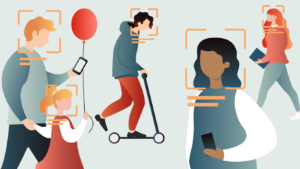New Technologies : Making Culture Accessible to All

The cultural sector, and more specifically the arts sector, is experiencing a constant process of dematerialization.
In a rapidly developing world and where information circulates spectacularly, how can we use digital technology to create free access to culture? Here are some examples :
Google, the web leader, and its cultural accessibility project
In February 2011, Google launched its online service, Google Arts & Culture.
This service allows virtual visits to various museums and provides high-definition visualizations of artworks. This launch by the web giant is without a doubt one of the most important accessibility projects of the decade. In addition to its extensive network of partnerships, the service also brings off an educational role with its educational content. With an extremely rich catalog and the development of new partnerships and exhibitions, Google Arts & Culture is a valuable tool for cultural accessibility on an international scale. The group is thus fulfilling its desire to « Preserve and bring the world’s art and culture online so that it is accessible to everyone, everywhere. »
Smartify, the Shazam of artworks
On a European scale, numerous projects promoting accessibility to the arts are flourishing. This is the case with the Smartify app. When an artwork is scanned, Smartify compares it to the artwork in its database. If the artwork is recognized, its name and description will be returned to the user. Smartify is a good example of the interest of programmers in creating new cultural applications.
MOOCS: a new opportunity for cultural accessibility
Worldwide, many educational and pedagogical projects are being created.
This is the case of the MOOCS « Massive Open Online Course » proposed by MoMA – The Museum of Modern Art. Free of charge, they allow everyone to easily access culture and knowledge. Digital technology allows new forms of learning that provide access to the wealth of major cultural institutions. The courses are free and accessible on the site so you can access them whenever you want and whenever you can.
Digital technology has enabled the development of new platforms and applications that promote cultural accessibility. Completely free of charge, they allow you to save on leisure expenses as well as limit travel but we can question the total accessibility of this type of content. A rapid progression of new technologies also contributes to a greater digital division. Although these contents make culture more accessible due to dematerialization, they are not accessible to all populations.
Autres articles
-

Les webinaires et la communication digitale d’entreprise à entreprise : la relation parfaite
-

L’essor de l’éducation digitale depuis l’épidémie de Coronavirus
-

Le rôle du SEO dans l’industrie de la localisation : s’implanter sur les marchés du e-commerce en arabe
-

Reconnaissance faciale : La fin de l’anonymat ?


